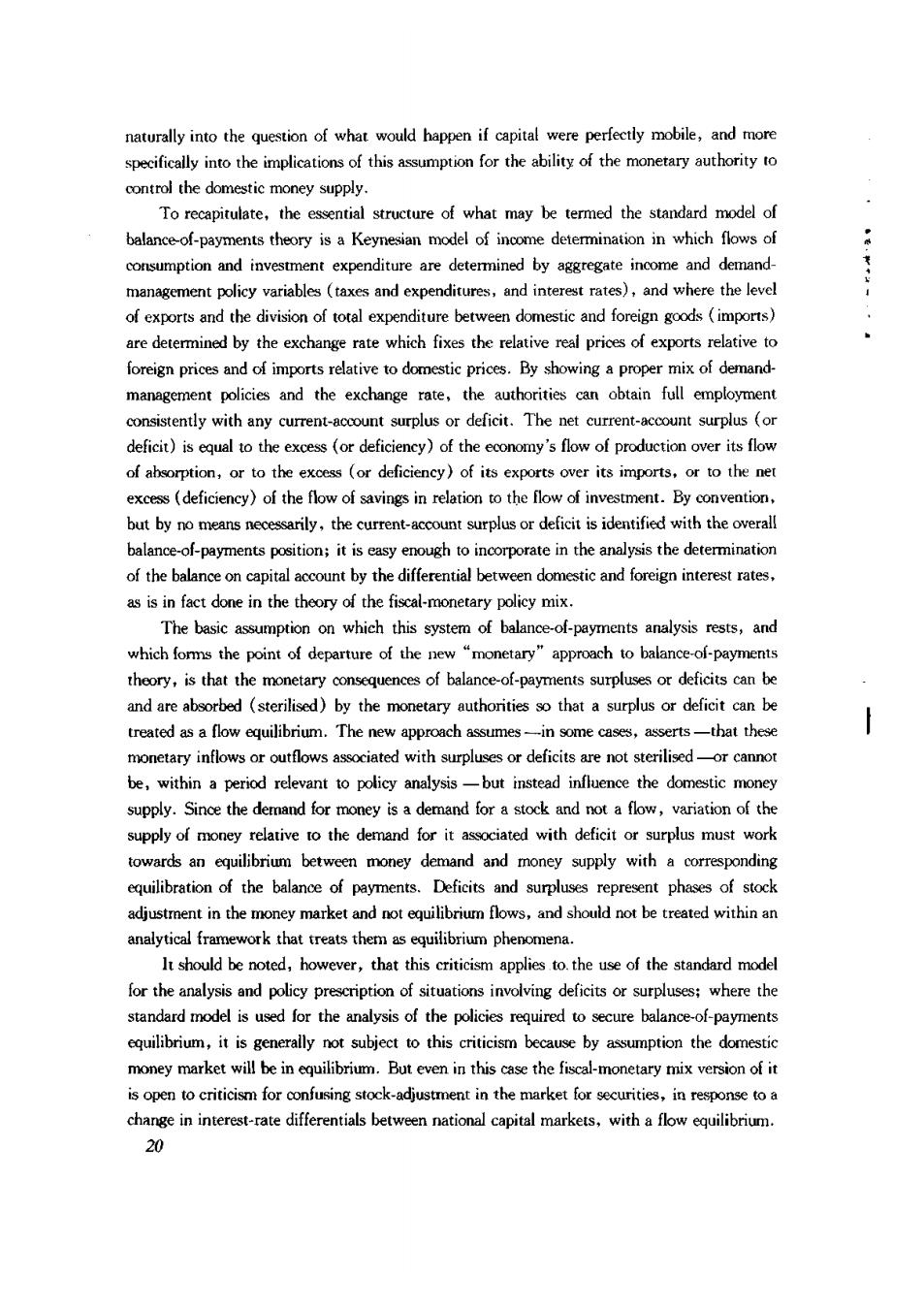正在加载图片...

naturally into the question of what would happen if capital were perfectly mobile,and more specifically into the implication of thisassumption for the ability of the monetaryauthorityto control the domestic money supply. To recapitulate,the essential structure of what may be termed the standard model of balance-of-payments theory isa Keynesian model of inme determination n which fows of consumption and investment expenditure are determined by aggregate income and demand management policy variables (taxes and expenditures,and interest rates),and where the level the expenditure between domesticand() are determined by the exchange rate which fixes the relative real prices of exports relative to foreign prices and of imports relative to domestic prices.By showing a proper mix of demand management policies and the exchange rate.the authorities can employme consistently with any current-account surplus or deficit.The net current-account surplus (o deficit)is equal to the excess (or deficiency)of the economy's flow of production over its flow or to the net excess (deficiency)of the flow of savings in relation to the llow of investment.By convention but by no means necessarily,the current-account surplusor deficit is identified with the overall of the balance on capital account by the differential between domestic and foreign interest rates as is in fact done in the theory of the fiscal-monetary policy mix. The basic assumptionon which this system of balance-of-payments analysisrests,and which forms the point of departure of the new "monetary"approach to balance-of-payments thoory,is that the balance-of-payments surpluseso deficits can be and are aborbed (sterilised)by the monetary authoritieso that a surplus or treated as a flow equilibrium.The new approach assumes- -in some cases,asserts-that these monetary inflows or outflows associated with surpluses or deficits are not sterilised- be. within a period relevant to plicy but instead inflence the domestic mone supply.Since the demand for money is a demand for a stock and not a flow,variation of th supply of moey relative to the demand for it associated with deficit or surplus must work rds an quilibrium between money demand and money supply equilibration of the balance of payments.Deficits and surpluses represent phases of stock adjustment in the money market and o flows,and should not betreated withinan ork that treats them phenomena It should be noted,however,that this criticism applies to.the use of the standard model for theanalysis and policypr sta ndard model is used or the analysis of the policies rquired cure balance-of-payment equilibrium,it is generally not subject to this criticism because by assumption the domestic money market will.But even in this case the fiscal-monetary mix versionofit is open to criticism for confusing stock-adjustment in the market for securities,in change in interest-rate differentials between national capital markets,with a flow equilibrium. 20